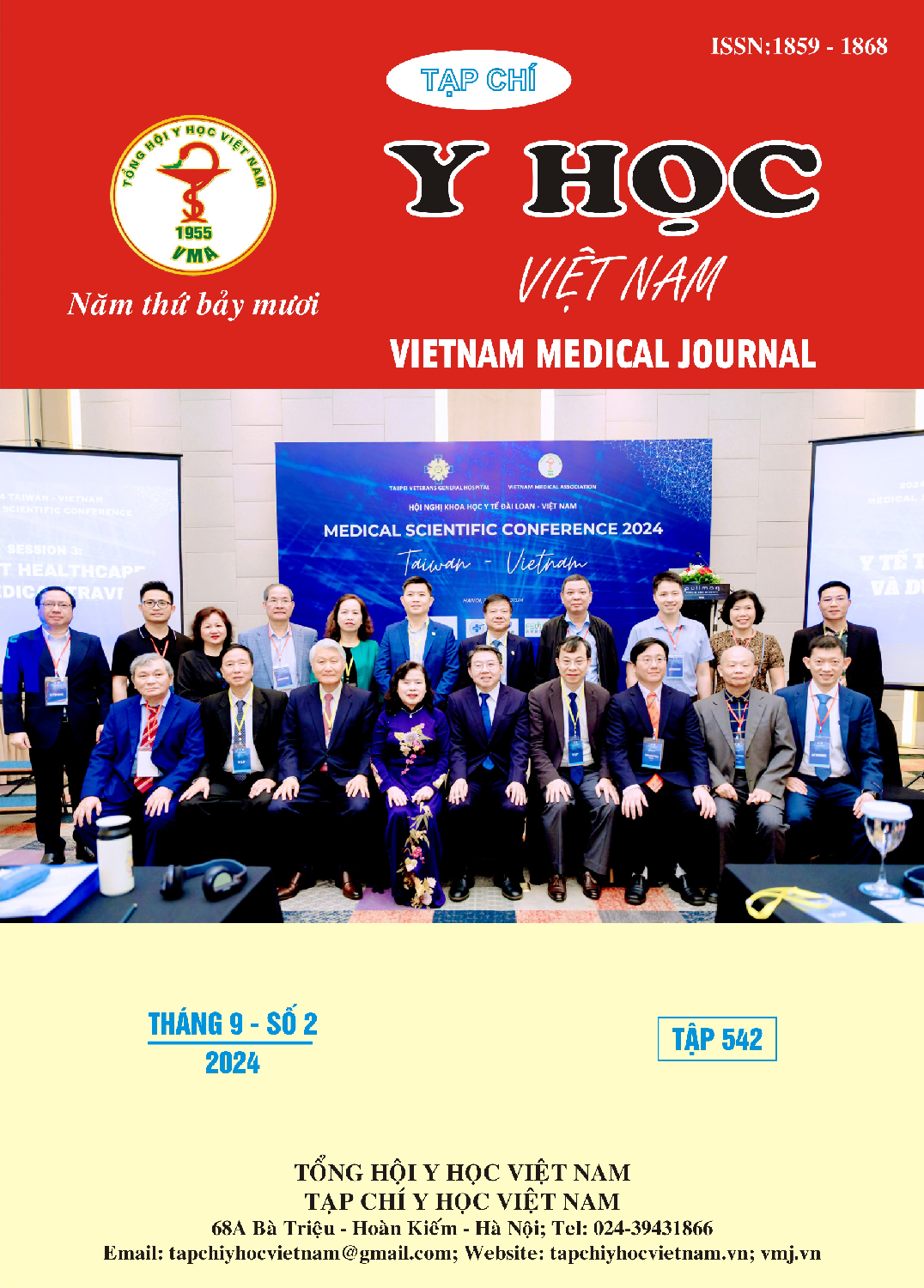RESULTS OF MICRODISCECTOMY TREATMENT FOR LUMBAR DISC HERNIATION AT L5-S1 LEVEL AT VIET DUC HOSPITAL
Main Article Content
Abstract
Objectives: Evaluate the outcomes of microdiscectomy treatment for lumbar disc herniation at the L5-S1 level. Objects and Methods: A longitudinal descriptive and prospective study on 42 patients with microdiscectomy treatment for lumbar disc herniation at the L5-S1 level. Results: 42 patients, the male-to-female ratio was 1.08:1, with an average age of 44.89 ± 9.34, ranging from 24 to 78 years. Clinical symptoms included radicular pain in all 42 patients (100%), low back pain in all 42 patients (100%), and positive femoral nerve strectch test in 39 patients (92.9%). Motor function impairment was observed in 1 patient (2.4%), and reduced tendon reflex in 12 patients (28.6%). The average preoperative VAS score was 7.58 ± 1.32. The average preoperative ODI score was 69.36 ± 7.42, with 92% of patients experiencing severe spinal dysfunction from grade III and above. Radiological features on MRI: disc herniation classification in axial revealed 25 patients with left-sided herniation (59.5%) and 17 patients with right-sided herniation (40.5%). The herniation location showed 37 patients with foraminal herniation (88.1%) and 7 patients with extraforaminal herniation (11.9%). Migration of disc herniation was observed in 22 patients, predominantly extruded migration accounting for 52.4%. Surgical details included an average operation time of 52.46 ± 10.48 minutes, an average blood loss of 124.52 ± 34.7 ml, and an average hospital stay of 5.75 ± 1.32 days. Intraoperative complications included one patient with dural tear (2.4%). Postoperative complications comprised one patient with local infection (2.4%). Surgical outcomes: Both VAS and ODI scores significantly improved at 1 and 6 months postoperatively, with a statistically significant difference (p < 0.001). MacNab was rated as good or excellent in 42 patients (95.2%). Conclusion: Microdiscectomy treatment for L5S1 lumbar disc herniation achieves favorable results with significantly improved clinical symptoms and low rates of complications and adverse events.
Article Details
Keywords
lumbar disc herniation, microdiscectomy treatment for lumbar disc herniation.
References
2. F. U. Hermantin, T. Peters, L. Quartararo & P. Kambin (1999), "A prospective, randomized study comparing the results of open discectomy with those of video-assisted arthroscopic microdiscectomy", The Journal of bone and joint surgery. American volume, 81(7): p. 958-65.
3. J. C. Maroon (2002), "Current concepts in minimally invasive discectomy", Neurosurgery, 51(5 Suppl): p. S137-45.
4. Phan K, Mobbs RJ. Minimally invasive versus open laminectomy for lumbar stenosis a systematic review and meta-analysis. Spine. 2016;41(2):E91-E100.
5. Nerland US, Jakola AS, Solheim O, et al. Minimally invasive decompression versus open laminectomy for central stenosis of the lumbar spine: Pragmatic comparative effectiveness study. BMJ. 2015;350(apr01 1):h1603-h1603.
6. George J. Dohrmann, Nassir Mansour, et al. “Long-term results of various operations for lumbar disc herniation: Analysis of over 39,000 patients”. Med Princ Pract. 2015 May; 24(3): 285-290.
7. Liu L, Xue H, Jiang L, et al. Comparison of Percutaneous Transforaminal Endoscopic Discectomy and Microscope-Assisted Tubular Discectomy for Lumbar Disc Herniation. Orthop Surg. 2021;13(5):1587-1595


